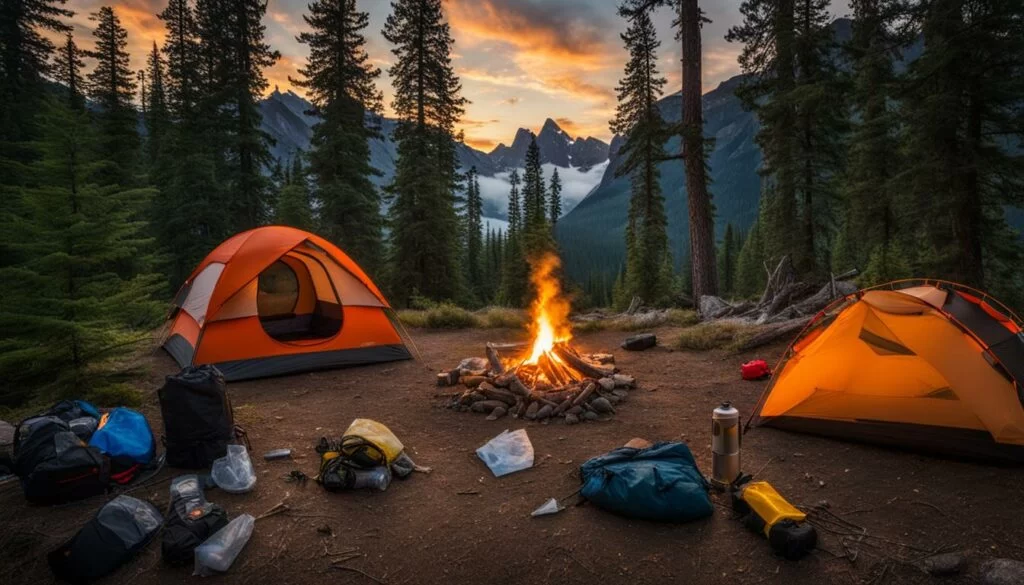Essential Tips for Staying Safe While Camping in Unfamiliar Territory
- Pre-Trip Planning: What You Need to Know
- Understanding the Terrain and Local Wildlife
- Camping Safety Tips for Unfamiliar Territory
- Emergency Preparedness: Be Ready for the Unexpected
- Choosing Safe Camping Destinations
Pre-Trip Planning: What You Need to Know
When planning a camping trip in unfamiliar territory, the first step is thorough preparation. Researching your destination, understanding the local environment, and having the right gear can make a huge difference in staying safe.
- Research the Area: Start by researching the area where you’ll be camping. Are there any local risks such as wildfires, floods, or dangerous wildlife? Websites, guides, and local authorities can provide important safety information.
- Know Your Group: If camping with a group, make sure everyone is aware of the terrain and potential hazards. Share maps and emergency contact information ahead of time, so everyone knows how to react in case of an emergency.
- Check Weather Conditions: The weather can change rapidly, especially in remote or mountainous areas. Always check the forecast before you leave, and be prepared for unexpected shifts in temperature, storms, or extreme weather.
Understanding the Terrain and Local Wildlife
Understanding the local terrain and wildlife is crucial when camping in unfamiliar territory. The more you know about the environment, the better equipped you'll be to handle potential risks.
- Terrain Considerations: Research the type of terrain you'll be camping in. Steep slopes, rivers, and dense forests all pose unique challenges. Make sure your campsite is on stable ground, away from dangerous terrain like cliffs or flood zones.
- Wildlife Safety: In unfamiliar areas, it's important to understand the types of wildlife that may be nearby. Bears, snakes, and other potentially dangerous animals require specific precautions. Carry bear spray, store food securely, and avoid wildlife encounters by staying alert and quiet.
- Trail Hazards: If you plan to hike, research trail conditions ahead of time. Are there any fallen trees or rocky paths? Are the trails marked clearly? Knowing what to expect will help you avoid getting lost or injured on a hike.
Camping Safety Tips for Unfamiliar Territory
Once you're on-site, there are several practical safety tips you should follow to minimize risks during your camping trip.
- Set Up Camp in a Safe Location: Always choose a campsite that is away from potential hazards such as riverbanks, cliffs, or dead trees. Avoid setting up camp near tall grass or dense bushes, as these areas could be hiding dangerous wildlife.
- Keep Food Secured: Storing food properly is essential to avoid attracting animals to your campsite. Use bear-proof containers or hang food at least 10 feet off the ground and away from tents.
- Stay Visible: In unfamiliar areas, being visible is key. Use brightly colored clothing and gear, and always let someone know where you’re going and when you’ll return. Carry a whistle, mirror, or flare to signal for help if needed.
- Bring Safety Equipment: Essential items like a first aid kit, a map, a compass, a flashlight, and a whistle should always be in your backpack. Make sure your gear is in working order before you head out, and check it again when you arrive.
Emergency Preparedness: Be Ready for the Unexpected
Even with the best planning, emergencies can still happen. Having a clear plan for emergencies is essential, especially when camping in unfamiliar territory.
- Have a Backup Communication Plan: If you're camping in an area without cell phone service, make sure you have an emergency communication plan. Satellite phones, two-way radios, or emergency beacons are useful tools for staying in touch with others.
- Know Basic First Aid: Accidents can happen, and knowing basic first aid skills can make a significant difference. Learn how to treat cuts, burns, insect bites, and other common injuries before heading out on your trip.
- Emergency Evacuation Plan: Know the quickest route out of the area in case of an emergency. Be familiar with the nearest hospital, ranger station, or safe place to seek help.
Choosing Safe Camping Destinations
The safety of your camping trip often starts with choosing the right destination. Some campgrounds or wilderness areas offer additional safety measures, which can be critical when camping in unfamiliar terrain.
- Look for Established Campgrounds: Opt for well-established campgrounds or resorts that provide services like rangers, designated fire pits, and safe water sources. These locations are typically equipped with more safety measures and are regularly maintained.
- Pine Cliff Resort: For a safe and comfortable experience, consider camping at places like Pine Cliff Resort, where you’ll find a well-managed and secure environment with expert staff ready to assist in any situation. Their experienced team provides valuable advice and ensures your safety throughout your stay.
- Check Reviews: Before choosing a destination, check online reviews or ask for recommendations. Reviews can provide insights into the safety of the area, how well it’s maintained, and any specific challenges to look out for.
By choosing the right destination and following these tips for staying safe while camping in unfamiliar territory, you can ensure that your trip is both enjoyable and secure. Ready to embark on your next adventure? Click here to explore safe and stunning camping destinations at Pine Cliff Resort!







